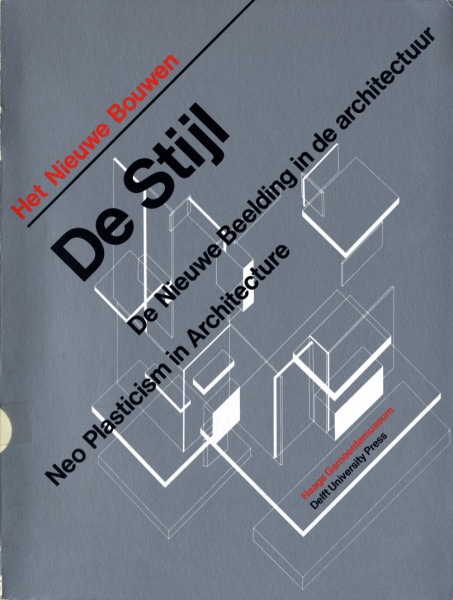Reyner Banham: Theory and Design in the First Machine Age, 2nd ed. (1960/1967)
Filed under book | Tags: · 1900s, 1910s, 1920s, aesthetics, architecture, art, art history, avant-garde, bauhaus, de stijl, design, design history, functionalism, futurism, history of architecture, industrial design, machine, technology

First published in 1960, Theory and Design in the First Machine Age has become required reading in numerous courses on the history of modern architecture and is widely regarded as one of the definitive books on the modern movement. It has influenced a generation of students and critics interested in the formation of attitudes, themes, and forms which were characteristic of artists and architects working primarily in Europe between 1900 and 1930 under the compulsion of new technological developments in the first machine age.
Publisher Praeger, New York and Washington, 1960
Second edition, 1967; Second printing, 1970
338 pages
Review (Robert Gardner-Medwin, The Town Planning Review, 1961)
Review (Dennis Young)
Review (Caroline S. Lebar, 2012)
Review (of the 2009 French edition, Hugues Fontenas, Critique d’art, 2010, in French)
Commentary (Gillian Naylor, Journal of Design History, 1997)
Commentary (Nigel Whiteley, 2005)
PDF (50 MB, no OCR)
Comment (0)Het Nieuwe Bouwen: De Stijl: Neo Plasticism in Architecture (1983) [English/Dutch]
Filed under book, catalogue | Tags: · architecture, art, art history, art theory, de stijl, functionalism, history of architecture, neoplasticism

“In 1975, as a result of intensive teamwork, the Netherlands Museum of Modern Architecture, the Stedelijk Museum in Amsterdam, the Gemeente Museum in The Hague and the Rijksmuseum Kröller-Müller at Otterlo presented a variegated picture of Dutch architecture from 1890 to 1930 in four exhibitions. The interest in them was so great that it was decided almost at once to take up a similar project again after a few years, this time on the subject of ‘Nieuwe Bouwen’ and the Netherlands 1920-1960. That undertaking has now resulted in five exhibitions (a new participant being the Boymans-van Beuningen Museum in Rotterdam), each of which shows a different aspect of ‘Nieuwe Bouwen’, from its prior history to its latter days. ‘Nieuwe Bouwen’ or Functionalism was a worldwide phenomenon which began to appear after the First World War. The realization that a new society was imminent was felt by many to demand radical new solutions to social, economic and cultural problems. In the Netherlands the first contribution to the stating of those problems was made by the artists and architects who had united in the De Stijl movement.” (from the Foreword)
With texts by Theo van Doesburg, Henk Engel, Pieternel Fortuyn, Jan de Heer, Cees Boekraad, Yve-Alain Bois, Umberto Barbieri and Herbert Henkels.
Het Nieuwe Bouwen: De Stijl: De Nieuwe Beelding in de architectuur. Neo-Plasticism in Architecture
Edited by Cees Boekraad, Flip Bool, Herbert Henkels
With an Introduction by Cees Boekraad
Publisher Delft University Press, Delft, and Haags Gemeentemuseum, Den Haag, 1983
ISBN 9062751040
179 pages
via TU Delft
PDF (327 MB)
Comment (0)De Stijl magazine (1917-1921) [Dutch]
Filed under magazine | Tags: · architecture, art, art criticism, art theory, avant-garde, de stijl, literature, neoplasticism, painting, poetry

De Stijl, Dutch for “The Style”, also known as neoplasticism, was a Dutch artistic movement founded in 1917. In a narrower sense, the term De Stijl is used to refer to a body of work from 1917 to 1931 founded in the Netherlands. De Stijl is also the name of a journal that was published by the Dutch painter, designer, writer, and critic Theo van Doesburg (1883–1931), propagating the group’s theories. Though the magazine never sold more than 300 copies, it had a strong influence on art in the Netherlands and abroad.
De Stijl: Maanblad gewijd aan de moderne beeldende vakken en kultuur
Edited by Theo van Doesburg
Published in Delft (1917-18) and Leiden (1918-21)

